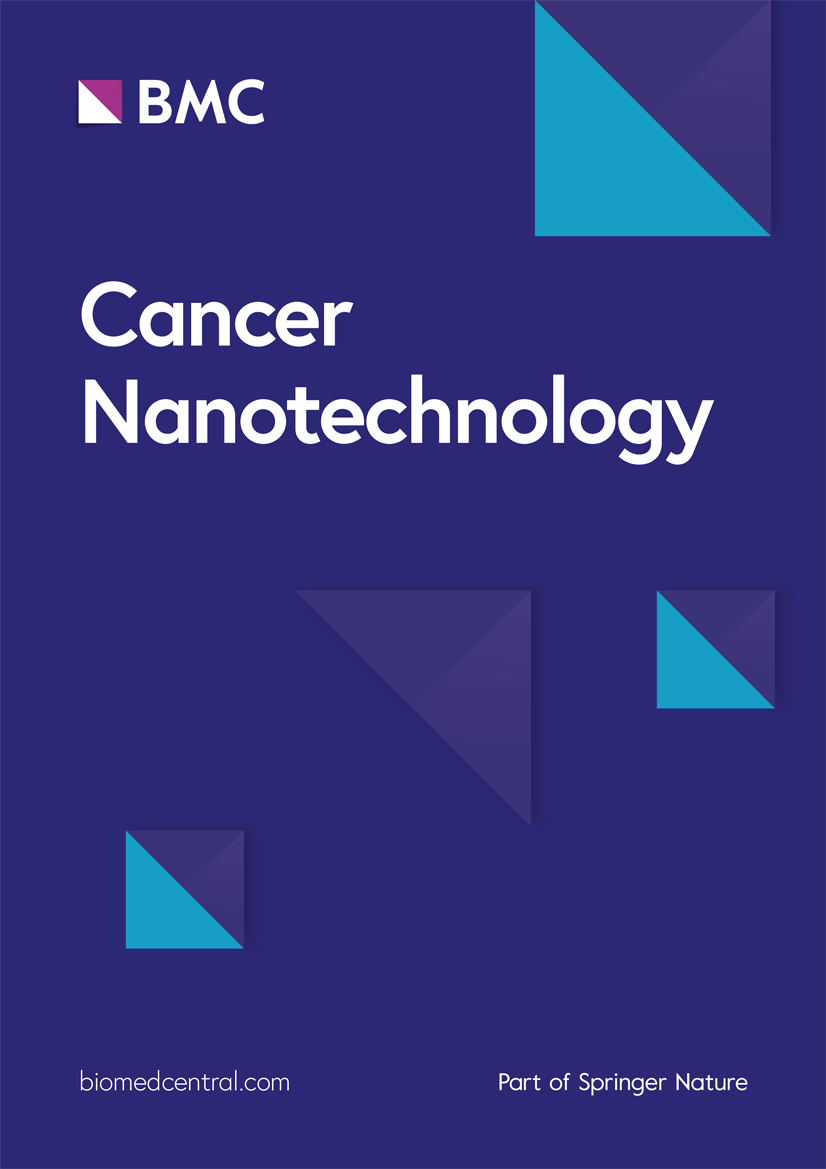Black TiO2-based nanoparticles as Toll-like receptor stimulator delivery system for enhanced photothermal-immunotherapy of pancreatic cancer
IF 4.8
2区 工程技术
Q2 NANOSCIENCE & NANOTECHNOLOGY
引用次数: 0
Abstract
The tumor-specific immune responses, essential for removing residual lesions and preventing tumor metastases, can be stimulated by tumor-associated antigens (TAAs) released following photothermal therapy (PTT). However, due to the immunosuppressed microenvironment of pancreatic ductal adenocarcinoma (PDAC), the TAAs released by PTT are difficult to induce an effective immune response. In this work, we prepared the mesoporous silica (mSiO2) coated black titanium dioxide (bTiO2) photothermal nanoparticles (NPs) for enhanced photothermal-immunotherapy toward PDAC, in which resiquimod (R848) was loaded and DOTA-Gd was conjugated. The NPs are specified as bTiO2@mSiO2@Gd/R848 and abbreviated to NPs/R848. R848 as a kind of Toll-like receptor 7/8 agonist can remodel the tumor microenvironment (TME) in PDAC and induce a strong immune response. Furthermore, DOTA-Gd serves as a magnetic resonance imaging (MRI) contrast agent to improve the T1-weighted MRI performance of the NPs. In vitro results of this study show that NPs/R848 could thermally ablate tumor cells and efficiently trigger dendritic cell (DC) maturation. The results of in vivo investigations demonstrate that the combined use of photothermal-immunotherapy exhibits a significant inhibitory effect on tumor growth. Besides, it promoted maturation of DCs and enhanced infiltration of CD8 + , CD4 + T cells to improve the TME in PDAC. Our study anticipates that by encouraging the maturation of DCs, this strategy will improve the TME and enable the successful photothermal-immunotherapy of PDAC.以黑色 TiO2 为基础的纳米粒子作为 Toll 样受体刺激剂递送系统,用于增强胰腺癌的光热免疫疗法
光热疗法(PTT)释放的肿瘤相关抗原(TAAs)可刺激肿瘤特异性免疫反应,这对清除残余病灶和防止肿瘤转移至关重要。然而,由于胰腺导管腺癌(PDAC)的免疫抑制微环境,PTT释放的TAA很难诱导有效的免疫反应。在这项研究中,我们制备了介孔二氧化硅(mSiO2)包覆黑色二氧化钛(bTiO2)的光热纳米颗粒(NPs),用于增强对PDAC的光热免疫疗法。NPs的名称为bTiO2@mSiO2@Gd/R848,缩写为NPs/R848。R848是一种Toll样受体7/8激动剂,能重塑PDAC的肿瘤微环境(TME)并诱导强烈的免疫反应。此外,DOTA-Gd 可作为磁共振成像(MRI)造影剂,改善 NPs 的 T1 加权 MRI 性能。本研究的体外研究结果表明,NPs/R848可以热消融肿瘤细胞,并有效地触发树突状细胞(DC)成熟。体内研究结果表明,联合使用光热免疫疗法对肿瘤生长有显著的抑制作用。此外,它还促进了 DC 的成熟,并增强了 CD8 +、CD4 + T 细胞的浸润,从而改善了 PDAC 的 TME。我们的研究预计,通过促进DCs的成熟,这一策略将改善TME,使PDAC的光热免疫疗法获得成功。
本文章由计算机程序翻译,如有差异,请以英文原文为准。
求助全文
约1分钟内获得全文
求助全文
来源期刊

Cancer Nanotechnology
Pharmacology, Toxicology and Pharmaceutics-Pharmaceutical Science
CiteScore
5.20
自引率
1.80%
发文量
37
审稿时长
15 weeks
期刊介绍:
Aim:
Recognizing cancer as a group of diseases caused by nanostructural problems (i.e. with DNA) and also that there are unique benefits to approaches inherently involving nanoscale structures and processes to treat the disease, the journal Cancer Nanotechnology aims to disseminate cutting edge research; to promote emerging trends in the use of nanostructures and the induction of nanoscale processes for the prevention, diagnosis, treatment of cancer; and to cover related ancillary areas.
Scope:
Articles describing original research in the use of nanostructures and the induction of nanoscale processes for the prevention, diagnosis and treatment of cancer (open submission process). Review, editorial and tutorial articles picking up on subthemes of emerging importance where nanostructures and the induction of nanoscale processes are used for the prevention, diagnosis and treatment of cancer.
文献相关原料
公司名称
产品信息
索莱宝
formaldehyde solution
麦克林
3-aminopropyltriethoxysilane (APTES)
阿拉丁
dimethyl sulfoxide (DMSO)
阿拉丁
Rhodamine B
阿拉丁
ethanol (C2H5OH)
阿拉丁
sodium hydroxide (NaOH)
阿拉丁
concentrated hydrochloric acid (HCl)
阿拉丁
cyclohexane (C6H12)
阿拉丁
hexadecyltrimethylammonium bromide (CTAB)
阿拉丁
sodium borohydride (NaBH4)
阿拉丁
tetraethyl orthosilicate (TEOS)
阿拉丁
TiO2 NPs
 求助内容:
求助内容: 应助结果提醒方式:
应助结果提醒方式:


